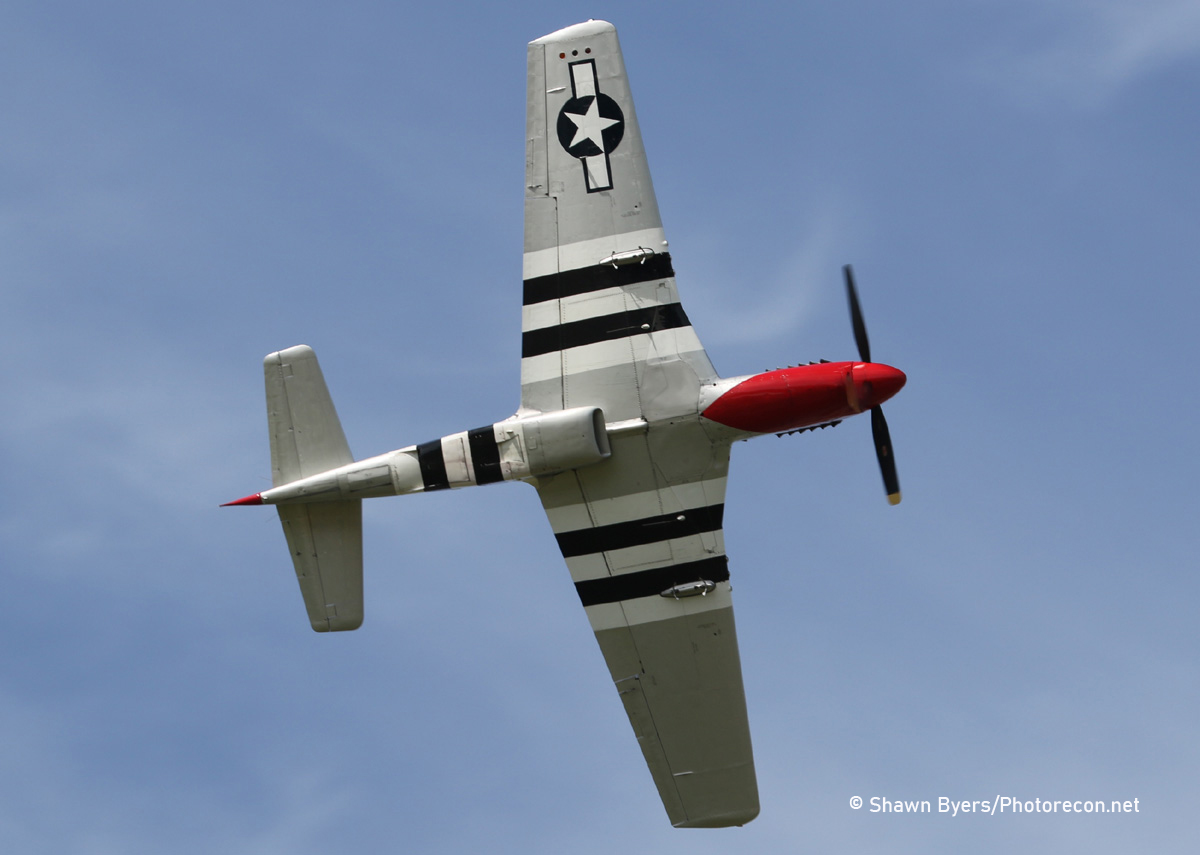What Are Those Invasion Stripes All About?

Photos from our Photorecon.net staff and military photographers, as credited…
Most World War II history buffs and experts know the reason behind those iconic black and white stripes found on many Allied military aircraft during the latter part of 1944. Used as an identification feature for Allied fighters, bombers, transports and a few other assorted aircraft, the three white and two black stripes painted on the wings and fuselages of aircraft utilized during the Normandy (D-Day) landings on the French coast were meant to be visual identifiers for friendly aircraft to the U.S., Commonwealth and other troops on the ground as well as other crews in the air.

More than 75 years later, many warbirds proudly wear those stripes today, and interestingly enough, the rather short-lived phenomenon seems to have been carried through multiple conflicts, and what looks like a hasty process was really well thought out.

During World War II, radar was still in its infancy. Planners for the D-Day landings knew that many anti-aircraft gunners and lookouts on ships needed reassurance that the aircraft above them were friends, not foes. Radar would be overwhelmed with the amount of aircraft in the air, and a faster method of identification was soon devised and tested, on June 1, 1944.

Visual striping gave a very positive identity to troops on the ground, and since the stripes would be on both the upper and lower parts of the airplanes, those flying would be able to benefit from them too. In fact, the Invasion Stripes, as they were to be named, were painted on upper and lower wings, and a band entirely around the fuselage as well.

To keep this method secret from the Axis powers who’d be defending the coast, orders to paint stripes weren’t given until two days prior to the planned invasion date, on June 3 and 4. Then, the actual day of the landings was postponed for one day due to weather, so the stripes were on planes for two or three days before the invasion was launched. The larger aircraft’s stripes would be two feet wide, smaller aircraft would receive one and a half foot-wide stripes. As it happened, only a handful of Luftwaffe sorties were made over the beachheads on June 6, so identification during the landings wasn’t a factor after all.

As Allied progress after the landings were satisfactory, and air superiority was steadily rising, the markings on top of the aircraft were ordered to be removed a month after the landings. By that time, the stripes were too visible, and adversaries could use that identification to their advantage. By the end of 1944, slightly more than six months or so after the D-Day landings, the stripes were ordered off of all aircraft.

Interestingly enough, black and white stripes were used in at least two occasions earlier than D-Day. A British operation in 1943 called Operation Starkey used black and white stripes to identify their low-flying aircraft, and with the introduction of the Hawker Tempest and Typhoon fighters, stripes were used to differentiate these aircraft from Germany’s FW-190 fighter, which had a similar appearance. The British Tempest and Typhoons were introduced in late 1942 and 1943.

After World War II, there were a number of conflicts that used visual identification tools again. During the Korean War, U.N. tactical aircraft used yellow wing panels for visual ID, except for the 4th Fighter Wing of the USAF, which used thin black and white stripes again.

British and Australian Navy aircraft were painted with the familiar black and white stripes too. During the Suez crisis of 1956, the Royal Air Force and Fleet Air Arm used yellow and black stripes.
With the 75th Anniversary of the Normandy Invasion occurring in 2019, a handful of active U.S. military aircraft were painted to carry Invasion Stripes as a tribute to their ancestors. Here are four new aircraft wearing old invasion stripes…

A U.S. Air Force C-130H Hercules aircraft from the 96th Airlift Squadron, Minneapolis-St. Paul Air Reserve Station, Minnesota. U.S. Air Force Photo by Tech. Sgt. Amber E. N. Kurka

A pair of heritage painted F-15E Strike Eagles assigned to the 48th Fighter Wing. U.S. Air Force photo by Tech. Sgt. Matthew Plew

A C-130J Super Hercules, belonging to the 37th Airlift Squadron on Ramstein Air Base. U.S. Air Force photo by Senior Airman Kristof J. Rixmann

An U. S. Air Force T-6A Texan II of the 455th FTS wearing commemorative World War II colors.

149th FW Commemorative D-Day makings.

Thus, World War II saw a short seven month use of the stripes, and then only one month of full upper and lower surface markings. The Korean War saw use of these visual features too. So even though you still see these stripes on warbirds today, remember that their use in real conflicts was limited to a few months or at the most a year or so at a time. So that’s what those Invasion Stripes are all about.
“The appearance of U.S. Department of Defense (DoD) visual information does not imply or constitute DoD endorsement.”
no images were found
























